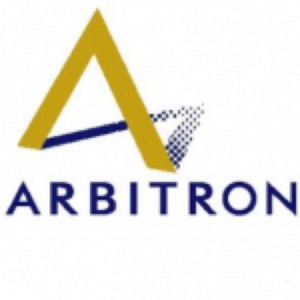Gail Chiasson, North American Editor
The one thing (really the only thing) that truly took my complete interest at the Digital Place-based Advertising Association’s all day conference at #dse2013 was Arbitron’s announcement that it has been and is further testing digital signage measurement via its Personal People Meters.
 Even the organized way it was presented made the announcement interesting in itself.
Even the organized way it was presented made the announcement interesting in itself.
Diane Williams, senior media research analyst; Neal Bonner, director of new service development; and Rob Winston, national account manager, each presented in turn; first explaining the PPM use in radio, then how it was now possible to use it in measurement of digital signage, how it is being applied and, finally, what this means for the industry and how it will now work with retailers for further testing and potential rollout.
PPMs are currently used to measure the $16.5 billion radio broadcast industry in the the U.S., as well as to measure the TV industry in Canada and several other countries. Broadcasters each encode the audible portion of their programming with unique inaudible signals.
“These signals are picked up by the small PPMs that are worn or carried 24/7 by 70,000 people across the top 48 markets in the U.S.,” said Williams. In households, each member of the family has a PPM, so information is available according to age, sex, locale and more. (Panel members are encouraged to constantly carry the PPMs by receiving points to shop online.)
Arbitron has been looking at how the panel could also measure digital out-of-home when there is no audio. While Bonner stressed that adapting the PPM for location-based media with no audio is currently conceptual, it appears that testing is quite far along and Arbitron is now asking the industry “how it can be applied to your product.”
Arbitron’s solution lies in Beacons that emit codes that can be read by PPMs even if no audio is present. Arbitron is testing two sizes of Beacon, with the Super Beacon covering a longer range, for instance, allowing knowledge of a person entering a store, while a Location Beacon shows the person being in an individual department. Installation of the Beacons is simply a plug-and-play for stores. A code is emitted every 30 seconds, so exposure and dwell time of the person seeing a screen is measured.
“This is seamless and has the potential for doing local market ratings, to measure reach and frequency, and to give media buyers and planners the software measurement tools similar to that available for other traditional media,” said Winston. “It’s key. GRPs are essential for media planning, and this will help move dollars into the digital out-of-home industry. It puts the industry on the same playing field as other media.”
Once retailers have information on the traffic relationship between their digital signage and the customers, they’ll be able to know the frequent shoppers and offer them added value with special promotions, loyalty cards and deals, Winston said.
The next step is participation by retailers, and if you are interested to be part of the Arbitron testing, management would like to hear from you.
We spoke to several people about the Arbitron announcement and the general word was that it is ‘intriguing’.
We also wondered what would happen if Nielsen’s $1.26 billion bid to buy Arbitron is accepted. (It’s currently waiting on regulatory approval.) However, since both companies have developed partnerships in the past to gain more knowledge and services, we imagine that this will not be something that disappears – unless Nielsen has an even better system that we haven’t yet heard about.

March 5th, 2013 at 16:14 @718
This is really amazing. I found this post raising the problem of measurements and although we have quite a lot of tools, we’re still not comfortable with those, looking for new metrics and tools. Now we’re trying to adapt an audio metric PPM to the DOOH market but shouldn’t we ask for standards? Most of the time the rate cards have no common basis, etc… I’m quite sure that PPM is nice and will bring its value but tomorrow we’ll get another one that will bring another piece, instead to ask to the ad market their ideal DOOH rate card.
So let’s move towards the regulation of the market and standards to be set up by the ones who wants organisation, like in other industries “we’re not different”! In Spain few DOOH media owners are waiting for this and in other countries too, including USA. It’s not a question of countries but rather of professionalism.